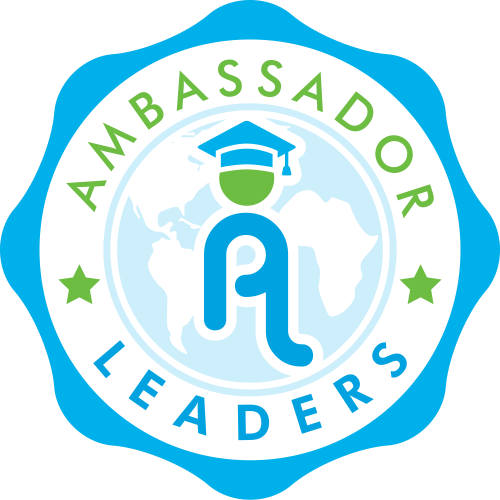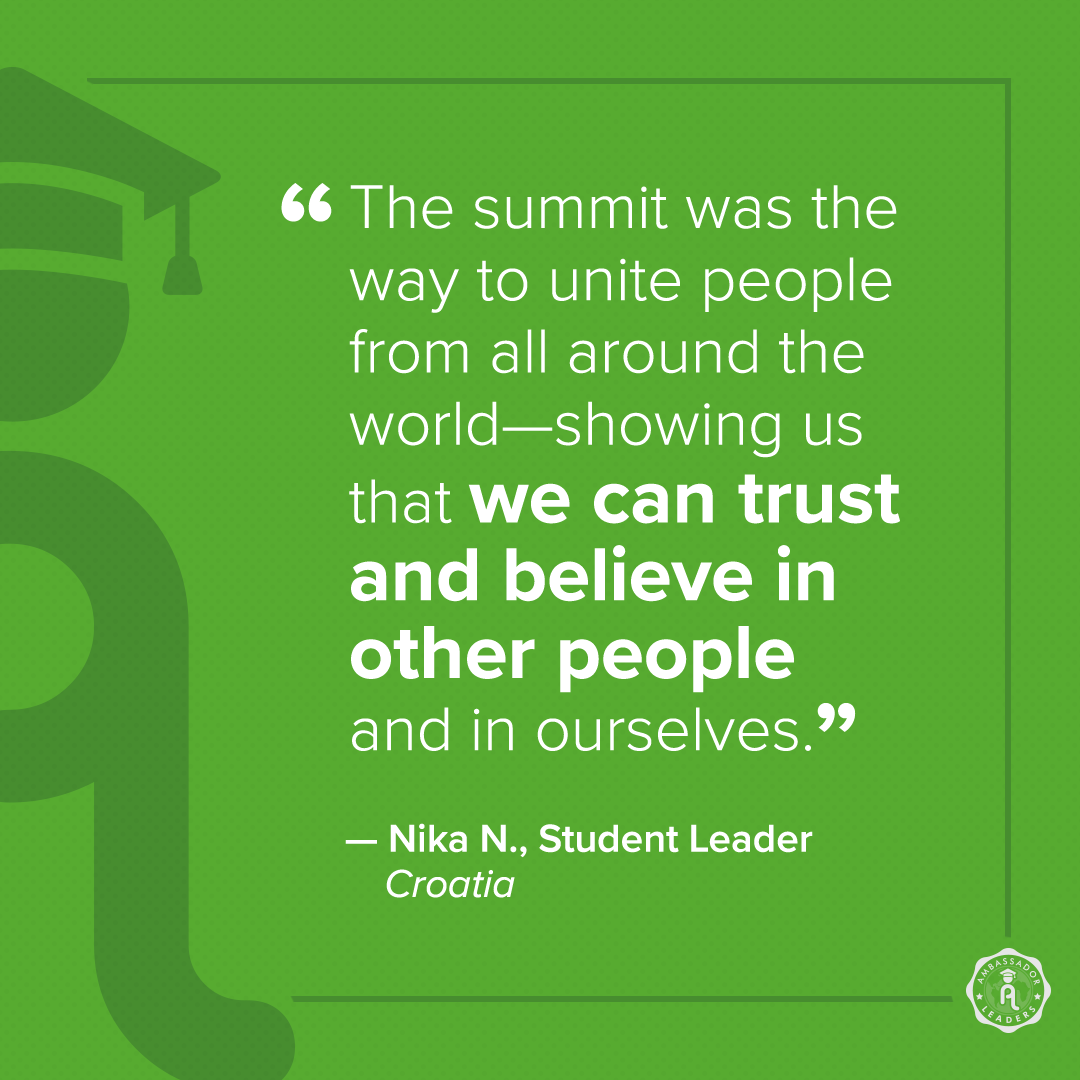Personal connections create a global ripple effect.
Today, we’re concluding our Foundations series. Our foundational values are at the heart of all that we do, but it isn’t enough to share what they are. In this series, we’ll explore why we chose these five pillars and how we teach them to students. You can read the whole series here.
As an organization, we’re proud our summits have hosted students from more than 140 countries and have provided opportunities for rich cultural exchange. Our teacher leaders and staff strive to raise students’ cultural intelligence (CQ) by promoting thoughtful interactions among each summit’s multicultural student population.
We think it’s fitting to close out our Foundations series with the pillar that ties into and binds together our other foundational values—Global Mindset. Like our other values, having a global mindset is at the center of what Ambassador Leaders is all about, and it’s one of the factors that makes the Summit experience so memorable.
Being part of a diverse team invites students to learn more about themselves, their teammates and the world, and that learning process develops our students’ cultural intelligence or CQ—an in-demand skill that they can take with them when they return to school and progress into the workforce. In short, a global mindset improves students’ leadership.
A global mindset also challenges students to discover and develop not just their own strengths but to recognize and leverage the strengths of their peers from different parts of the United States and the world. It shows our students that true strength comes from optimizing our differences, not relying upon our similarities. A global mindset insists on inclusion.
Adopting a global mindset also allows students’ creativity to flourish. As our students hear from their teammates about the challenges their home communities face—whether it’s plastic pollution on their shores, food scarcity among vulnerable families or inequities in how people access healthcare—our students’ eyes are opened to issues they may not have encountered before. And in becoming aware of these problems, students use their Community Action Plans to determine how they can serve to fix the problem. A global mindset helps students see that they are a part of something bigger than themselves and that their service matters.
Finally, a global mindset asks students to put their trust in their teammates, even though they arrive as strangers to one another. Through team building, work on the team project and presentation, cultural exchanges like the Summit’s hallmark event Global Youth Panel, and shared experiences and laughter, we ask students to trust that they are more alike than they are different, that shared purpose is more powerful than differing opinions, that a week-long experience together can form lifelong friendship, and that we are always stronger together than we are alone. A global mindset invites collaboration.
Truth be told, we’re most proud and inspired when students tell us that their Summit helped them make friends who feel like family and opened their hearts and minds to people and places outside their hometown. It means that we lived all our other foundational values, and that when our young leaders accomplish BIG things—because they will—they’ll do so knowing they’ve got a world of support behind them.
By Corie Bales
Corie is the Academic Affairs Manager of Ambassador Leaders. As a lifelong educator and avid traveler, she believes in empowering students and teachers to learn and lead through experiential education.





